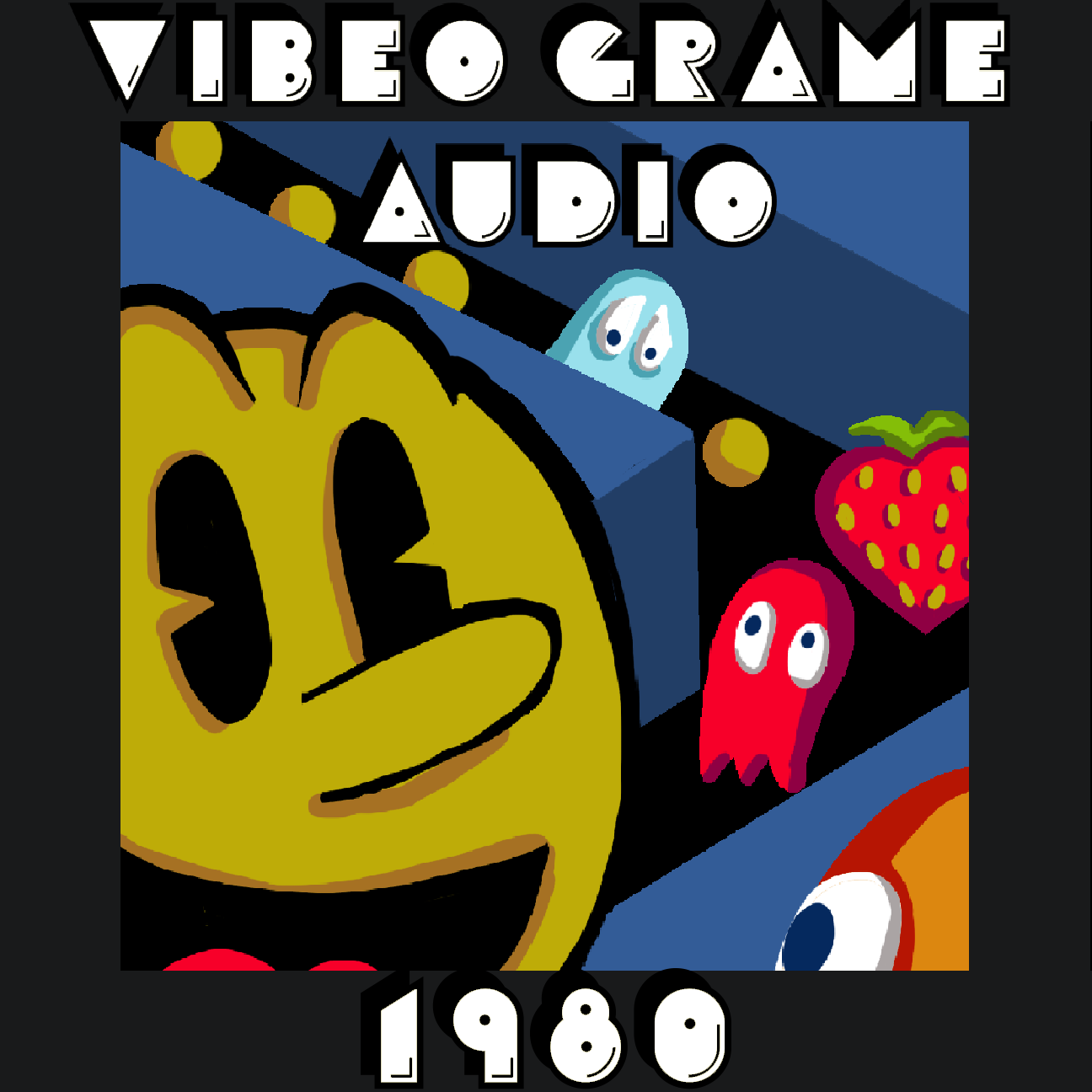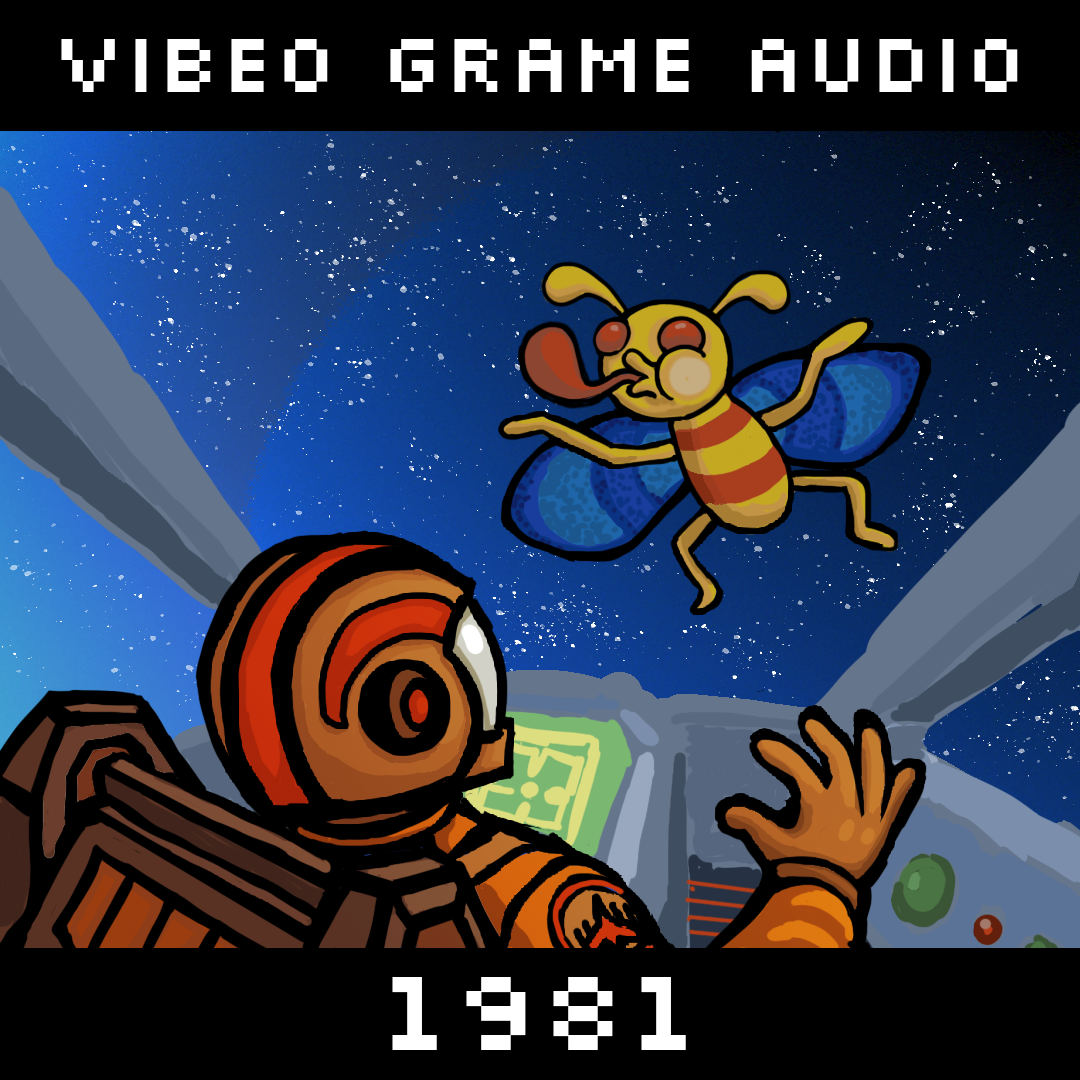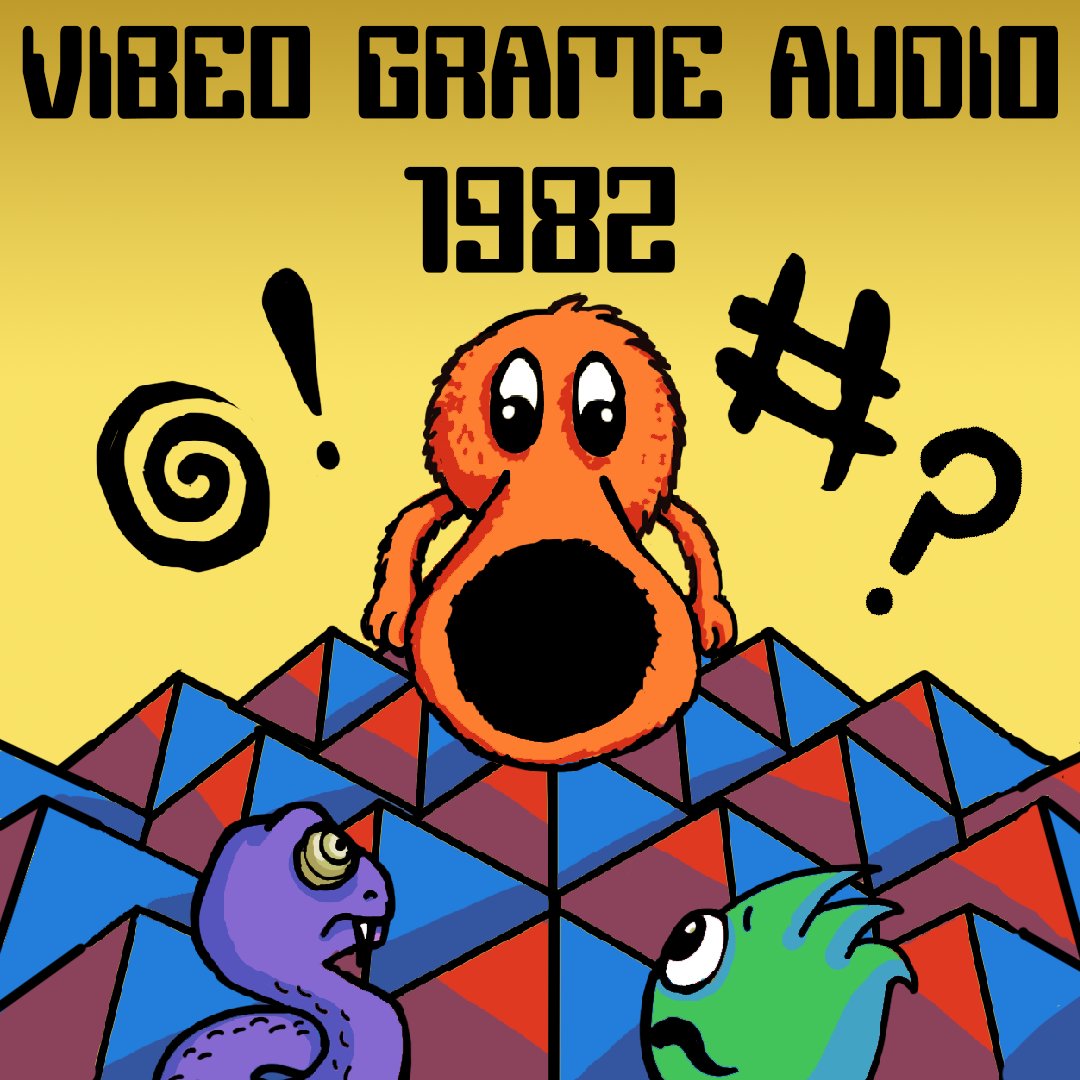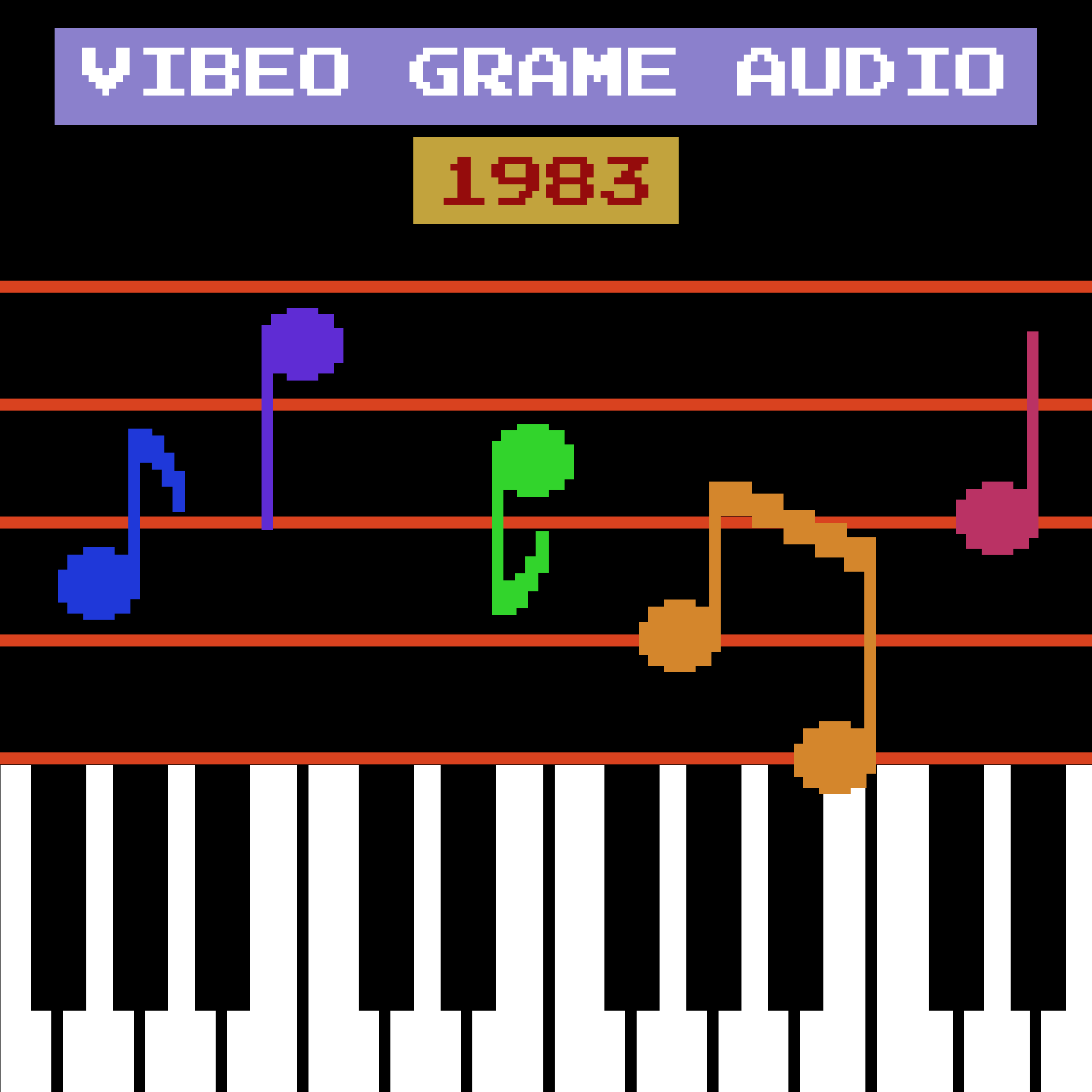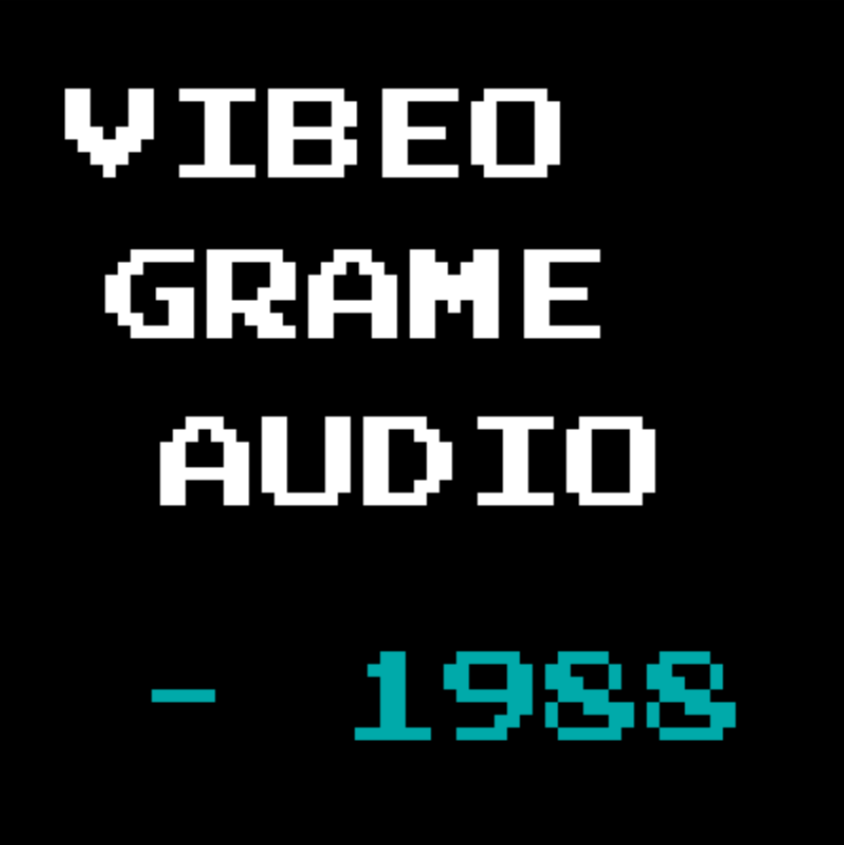Image by Empfindsamer
There’s something different about video game music after 1984. Larger games means more space for sound. Better graphics means sound and music can match the visuals. More complex stories means tracks are written based on specific characters and events. There isn’t just more music, but a whole new reason to write it.
Where the video game soundtrack - a fully realized series of individual musical cues - was almost nonexistent before 1984, now it is the norm. Games without at least one iconic BGM track suddenly look amateur. The soundtracks are all very short, and most are very simple, but complexity is not the only measure of music’s value. Now games have popular and original tunes that you can hum, melodies that stick with you long after you put the controller down. And while arcades still have the most technologically advanced hardware, consoles are starting to catch up with their new third generation machines such as the Sega Master System and Nintendo Famicom.
As soundtracks become more important, so do their composers, who treat their craft seriously. The medium is still in its infancy and so these composers are hampered by not only a lack of technology, but a lack of precedent. Nobody has done this before. There are no giants whose shoulders they can stand upon. There are no classes yet on how to make good video game tunes and no YouTube tutorials. Whatever tropes we rely on today to create iconic game music have to be invented by this crop of new musicians in the 80s.
Starting with this year, every entry (where possible) will have a link to a playthrough and to the dedicated OST (Original Soundtrack). The playthrough is helpful to see how sound and music interact with the rest of the game, but some games are too large to watch in one sitting. If you just want to hear the music on its own, the OSTs are the way to go.
Honorable Mention: Tetris
Tetris is one of the most popular games of all time, if not the most popular. And it did come out in 1984. Even so, I can’t really put it on this list because the original version didn’t have sound. The iconic Russian folk song that became associated with Tetris wasn’t added for several more years. I’m including it here only to acknowledge that, yes, it was a big deal and, yes, eventually it got music and sound, and so I can’t not say something about it. There, now I’ve said something about it.
#7: Gaplus
Composer: Junko Ozawa
Platform: Arcades
Ga-plus = Galaga, plus. If it ain’t broke, don’t fix it. And in an era where arcades are king, the only real way to keep your game relevant for a long period of time is to remake it, add some fun extras, and re-release it. Gaplus has more of everything you loved from the original.
As arcade games get more and more advanced, they only get noisier. Anything that can have a sound effect will have a sound effect. Frankly, this is aggravating to listen to at home, by myself, in the dark, with headphones on. But if that’s also your reaction to hearing this, remember that in 1984, you could only hear this in the arcades, and arcade halls aren’t quiet and solitary. Every game was in direct physical competition with every other game, and in order to draw in new players, games had to have extremely flashy graphics and the loudest noises (source: me, going to arcades and having my head exploded by noise).
#6: Pitfall II
Composer: uncredited, so probably David Crane, the designer
Platform: Console (Atari 2600)
Even though the Atari 2600 had been around since 1977, not one single game managed to make any of my prestigious lists until now. Despite how ground-breaking the console was at the time... the audio was never good. Try as I might, I cannot bring myself to enjoy anything from that system except for Pitfall II.
To even get this soundtrack up to snuff, a special sound chip was added to the cartridge. Out of the box, the Atari 2600 had two sound channels total. It could make either white noise or a distorted, out-of-tune buzzing that I can only describe as a computer’s attempt to produce the brown note. Adding the extra chip allowed for more sound channels of higher quality.
Especially for the system it was released on, Pitfall II was a mind-blowing accomplishment. In terms of gameplay style, graphics, and sound, it bridges the gap between its generation and the incoming third gen consoles. Nothing else on the 2600 could do this. Neither could most other console games.
#5: Ice Climber
Composer: Akito Nakatsuka
Platform: Console (Famicom/NES)
I don’t want to talk about this game’s music very much. The music is fine and all. But I remember playing this game as a kid and I never managed to get past level 2. So instead I want to talk (complain) about how this game is too hard. It’s my list and I will go off topic when I feel like it.
In order for an arcade game to be successful, it has to be difficult. Skull-crushingly difficult. So difficult that the people who like it have to grind over and over to get good enough to win. More grinding means more plays, and more plays means more quarters spent. The games are thus very repetitive, with each successive level being essentially a copy of the previous, over and over, until the player loses. And all through the second generation of consoles, game designers basically took games that were popular in the arcades and ported them over. The Atari 2600 was essentially a home arcade machine, as their most popular titles were versions of the big boys from the arcades. But playing arcade games at home sucks. I don’t want to play for forty hours to get good enough to get to level 2. There is no reason to gatekeep me. I already gave Mr. Nintendo all of my money to play this game.
I do believe these designed choices influenced the soundtracks, too. Arcade-style games offered the same thing over and over, so the music was the same thing over and over. Ice Climber follows the mold: one track total for all the levels, one track for the bonus level (and also the title screen), and then a handful of stingers. The tunes are catchy - catchy enough to earn a spot on this list. But I can’t help feeling like the designers didn’t make the most possible use out of the Famicom they could. They weren’t even porting an arcade game to the console! This game was developed for consoles first! Aha, I tricked you! There was no reason to make this game so difficult! But in 1984 most people thought consoles were just a way to play the arcades at home, and so we got arcade games at home.
#4: Balloon Fight
Composer: Hirokazu Tanaka
Platform: Console (Famicom/NES)
Balloon Fight and Ice Climber fit into the same archetype: arcade-type games, but created first for consoles and then ported over later. This one gets the edge for having more music, and for the music being more interesting. It also has the more interesting composer.
Hirokazu “Hip” Tanaka had already worked on sound design for some games, such as the original Donkey Kong. Balloon Fight wasn’t his first ever soundtrack being credited as the composer - that honor goes to Donkey Kong 3, a game I just couldn’t be bothered with - but it is his first well-known soundtrack. Along with greats such as Koji Kondo and Yuriko Keino, Tanaka makes up an era of Japanese video game composers who basically invented the style we associate with game music. Also like the others, Tanaka’s first games were too small and the hardware too primitive to really show off what he was capable of. If you know him by name at all, you probably know him for games such as Metroid and EarthBound.
But despite the hardware limitations, a hint of his offbeat bizarro-world writing does come through... even if it’s buried deep in the soundtrack. The best track by far is the Bonus Round track, which was a big enough hit that it got reprised in Super Smash Bros. Melee 17 years later!
Watch a playthrough of Balloon Fight
Listen to the Balloon Fight OST
#3: The Tower of Druaga
Composer: Junko Ozawa
Platform: Arcades
If you’re from North America like me, you might not have even heard of this game. While it was a huge success in Japan, it flopped over here, probably because it was too flipping hard. Nowadays it’s remembered as foundational to the creation of other genres of Japanese games, notably JRPGs and Action/Adventure such as the Legend of Zelda.
1984 is a strong year for soundtracks, and so The Tower of Druaga can only snag the number three spot. But believe me when I say that’s only because the next two are even more impressive. This is an amazing piece of work, and one of the earliest soundtracks I would listen to for fun. The music is surprisingly complex, especially given that the genre (maze games, to which Pac-Man belongs) was not really known for doing more music than the bare minimum. Complexity is not the singular measure of “good music,” but when a genre gains the capacity for complexity, that’s always a good thing. This soundtrack isn’t better than the others only because of the existence of changing time signatures, unusual harmonic progression, or polyphonic writing. But those are good things and they make this soundtrack really interesting to listen to, and they distinguish it from the vast majority of chiptune soundtracks through the 80s.
Watch a playthrough of The Tower of Druaga
Listen to the Tower of Druaga OST
#2: Pac-Land
Composer: Yuriko Keino
Platform: Arcades
This is Yuriko Keino’s third time being on any of these lists, and for good reason.
Anyway, Pac-Land represents a significant leap forward in the conception of a video game soundtrack. It is not the first game to use multiple BGM tracks, but it does something that hadn’t yet been done. Up until this point, if a game did have a full soundtrack of original music, each tune would be its own distinct melody. None of them really related to each other, (beyond being written in the same style). If any two tracks shared a theme, it was because one track was the “main” theme and the second used a small piece of it. For instance, Tower of Druaga sprinkled the main level theme into the stingers. Otherwise, the idea of a singular musical motive being the jumping off point for multiple tracks began with Pac-Land.
Okay, it’s just three tracks in this one, the “Outward” and “Homeward” levels, and then the “Name Entry” track. (I’m not counting stingers which are clearly derived from the main theme.) They are basically the same tune, in a different arrangement. However, none have the best claim to being the “prime” track from which the others are derived. Instead, they are all derived from one melody that begins with the hook F-G-F-G-F. I have heard it said this melody comes from a Pac-Man TV appearance and isn’t original to Keino, but her arrangements of the tracks are definitely original. That’s right, kids, it’s a leitmotif!
Well, I’m not sure I’d call it a leitmotif. There seems to be a unique way that video games use the concept of leitmotif that might warrant a new term. Whatever the case, there’s a theme that’s not just representative of a particular character, mood, or plot element - it’s representative of the game as a whole. Other media come close to this idea, like films, which often have a single theme associated with the movie, but usually that theme isn’t then baked into every single other track. And besides, only games have the ability to dynamically create a soundtrack around the theme, which makes this kind of writing unique and brand new to the world in 1984. This being the first ever game to design its soundtrack around a unified idea, it’s still a bit primitive and not really all that distinguishable from classical leitmotif. Nevertheless, it was a conscious choice by the composer, and Keino was the first to do it, so she gets the gold star. Again.
If you’re going to listen to the music, though, I recommend the OST on its own - the actual game is filled with so many sound effects the music gets clipped every 0.2 seconds and you can’t hear it.
#1: Marble Madness
Composer: Brad Fuller, Hal Canon
Platform: Arcades
(Note: there are two composers credited here, but I can only really find additional sources and info for Brad Fuller. If anyone knows where Hal Canon is, they are probably Hal Canon.)
This soundtrack slaps. It’s a bop. A banger.
Now that I have established rapport with the youth, time to talk about the greatest soundtrack of 1984, and not only that but one of the best of the entire decade. Most people at the time thought that video games were silly entertainment for children (hell, a lot of people still think that), and thus made video game soundtracks child-like and simple. Some great soundtracks come out of that, yes. But Marble Madness (among others such as Tower of Druaga) proved that there was no reason game music couldn’t be just, really weird and out-there, complex, gnarly shit, bro, goated with the sauce. (I am a big hit with the Gen Z.)
Additionally, Marble Madness is the very first game to use FM Synthesis. Do not ask me how FM Synthesis works. I am not qualified to understand how FM Synthesis works. But I can read along with the Wikipedia page and nod my head like I understand, and now you can too! All you need to know is that FM Synthesis improves upon the previous system of simple, built-in waveforms by allowing composers to import, edit, or create their own samples. (Most of the time they just used whatever samples were already on the chip installed on the machine.) We’re still using FM Synthesis today, though the tech now is obviously more advanced than it was in 1984.
The chip used for this game was the same (or similar) to one used in a Yamaha DX7 synthesizer, so theoretically it would be possible for any game at the time to use this “soundfont,” or collection of samples. Besides giving the sound samples higher quality, FM Synthesis also created the first ever “orchestration” for video games. The more complex waveforms produced by the synthesizer were much easier to distinguish from one another, sounding like their own separate instruments in a combo or chamber ensemble. Sure, none of them sound exactly like acoustic instruments, but they each have their own character and take their own space in the mix.
Watch a playthrough of Marble Madness
Listen to the Marble Madness OST















